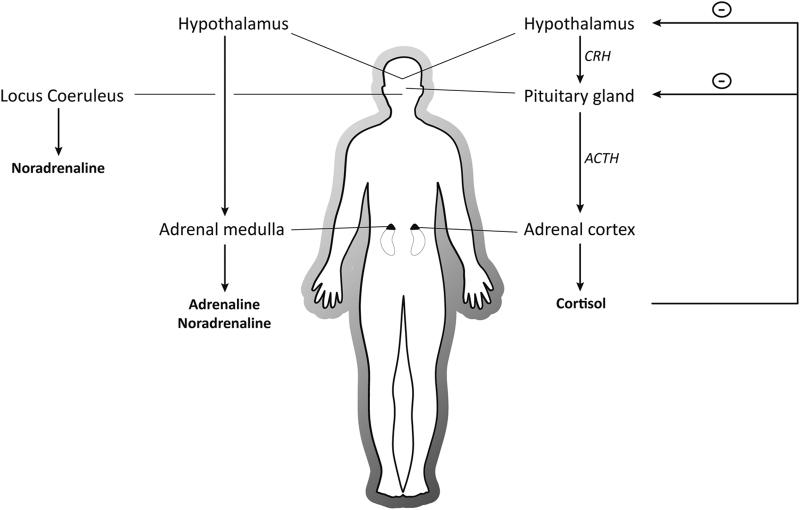Figure 1.
Systems activated in response to stressful events. On a stressful encounter, the autonomic nervous system (left) is activated within seconds to release catecholamines (e.g., noradrenaline) from the adrenal medulla and the locus coeruleus in the brain stem. Catecholamines are implicated in the ‘fight-or-flight’ response, but they also have profound effects on attention, working memory and long-term memory. Somewhat slower, the hypothalamus–pituitary–adrenal axis is activated, releasing corticotropin-releasing hormone (CRH) from the hypothalamus which stimulates the anterior pituitary to secrete adrenocorticotropic hormone (ACTH). ACTH in turn causes the adrenal cortex to produce cortisol and release it into the blood stream. Cortisol reaches peak level concentrations ~20–30 min after stress onset and readily enters the brain to affect cognition and behaviour. Cortisol feedback to the pituitary, hypothalamus and other brain areas (e.g., the hippocampus) prevents the system from overshooting.

